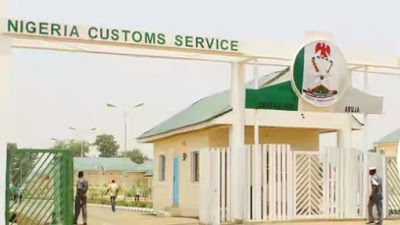The Nigeria Customs Service is set to introduce Webb Tracker mobile Application and a simplified standard operating procedure for the use of scanners, to serve as a boost to the Federal Government’s policy on ease of doing business.
This is contained in a statement by the Image-maker of the Nigeria Customs Service, Joseph Attah.
According to the statement, the mobile app enables any person that has access to the NICIS II to remotely validate any declaration/payment and more importantly the status of a particular consignment/vehicle.
“With this innovation, motorists and owners of other imported goods no longer have to wait for long period of time for field operatives to confirm the validity of their documents before letting them go.
“This mobile app which can be installed in mobile devices (phones, tablets e.t.c) enables the use of the vehicle identification number to upload data concerning the type, make and model of all vehicles at the point of making declaration with a view to assigning value for the payment of appropriate Customs duty,” the statement read in part.
It also disclosed that on the road, field operatives using this mobile application would be able to validate any Customs declaration in real-time, using the vehicle identification number (VIN) and the Customs control numbers to ascertain the correct status of vehicles and other containerized goods released or in transit.
The statement added that apart from removing acrimonies associated with enforcement activities on the highways; this would robustly facilitate free flow of compliant trade while checking illegal imports.
Explaining the guidelines, the statement says: “The simplified standard operating procedure provides clear guidelines on the usage of scanners at all entry and exit points in Nigeria.”
The steps are:
All containers are Pre-Scanned as soon as they are discharged from vessel.
Declaration, Assessment and Payment is made by the declarant.
NICIS II Risk Engine allocates scanned containers to designated Image Analyst.
For Compliant Containers:
Compliant Containers are released from Customs Control.
Released Container is acknowledged and exited through the gate.
For Non-Compliant Containers:
At the end of each day, a list of suspected containers is forwarded to the Terminal Operator.
Terminal Operator positions them for physical examination on the request of the Declarant.
Officers on Recheck duty examine the suspected containers.
Examination is submitted to the Scanner Manager for further action.
Released Container is acknowledged and exited through the Gate.
While giving approval for the launch and implementation of these innovative trade facilitation tools, the CGC, Col. Hameed Ibrahim Ali (Rtd) expressed the hope that these tools would eliminate incumbrances being currently experienced by international trade actors in Nigeria, the statement said.
Ali calls on stakeholders to support the Customs in its drive to deliver Customs best practices to the nation.

